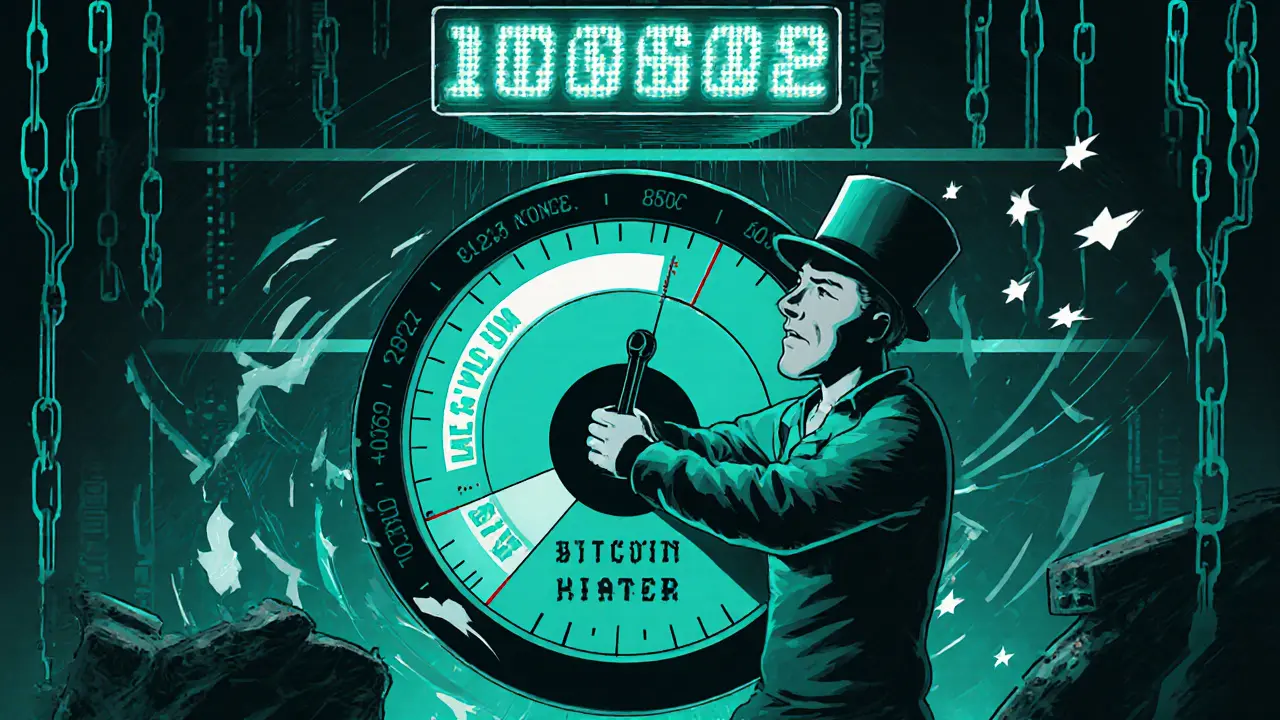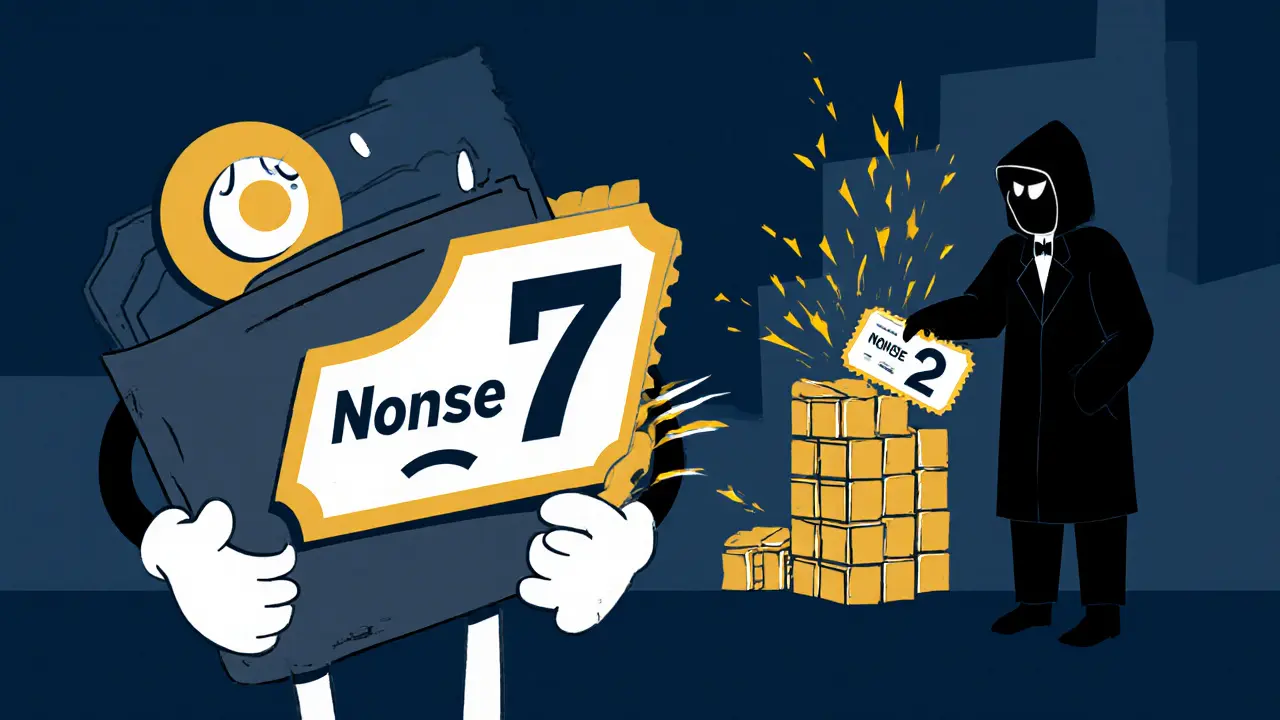Nonce Transaction Simulator
This tool demonstrates how Ethereum nonces work to prevent transaction replay attacks. Enter the current nonce and proposed next nonce to see if a transaction would be valid.
Transaction Validation Process
Validation Demonstration
Imagine you send $500 to a friend using a blockchain transaction. A hacker intercepts that signed transaction and rebroadcasts it-again and again-draining your wallet. Sounds impossible? It would be, if not for the nonce. Without it, replay attacks would be routine. With it, they’re blocked before they start.
What Is a Nonce, Really?
A nonce is short for "number used once." It’s not magic. It’s not complex cryptography. It’s a simple counter: a number that goes up every time you send a transaction from your wallet. On Ethereum, if you’ve sent three transactions, your next one must use nonce 3. Then 4. Then 5. No skipping. No repeating. This counter is stored right in the blockchain’s state-every node knows exactly what nonce your address should use next. If someone tries to resend an old transaction with nonce 2 after you’ve already used it, the network just says: "Nope. Already used. Reject." It’s like a one-time use ticket. Once you’ve boarded the train with ticket #12, you can’t use it again. The turnstile won’t let you through a second time.Why Replay Attacks Are a Real Threat
Before nonces, blockchain networks were vulnerable. In 2016, after the Ethereum hard fork that split from Ethereum Classic, users found out their transactions on one chain could be replayed on the other. Someone sent 10 ETH on the new Ethereum chain-and suddenly, 10 ETH also disappeared from their Ethereum Classic wallet. Why? Because the transaction signature was identical on both chains. The network didn’t know which chain the user meant. Without a way to tell them apart, the same signed message worked everywhere. That’s where EIP-155 came in. It added the chain ID to every transaction. Now, a transaction signed for Ethereum (chain ID 1) can’t be replayed on Polygon (chain ID 137) or Optimism (chain ID 10). But even with chain ID, you still need the nonce. Chain ID tells the network where to apply the transaction. Nonce tells it when it was sent-and that it hasn’t been used before.How Nonce Works in Ethereum Transactions
Every Ethereum transaction includes five key fields: to address, value, gas limit, gas price, and nonce. The nonce is the first one checked. Nodes don’t even look at the rest until they verify the nonce is correct. Here’s how it works step by step:- You sign a transaction with your private key, including the next expected nonce (say, 7).
- You broadcast it to the network.
- A miner picks it up and checks your account’s current nonce in the state.
- If your account’s nonce is 7, the transaction is valid. If it’s 8, the transaction is rejected-because you’ve already sent transaction #7.
- Once mined, your account’s nonce is incremented to 8.

Nonce in Smart Contracts and Application-Level Security
Nonces aren’t just for sending ETH. They’re vital for smart contracts too. If a contract lets users sign off on actions-like approving a withdrawal or changing permissions-it must verify the nonce each time. A bad contract might just check: "Did this signature match the public key?" That’s not enough. An attacker could capture a signed message from a user and reuse it later to drain funds. Good contracts do this:- Track a nonce per user (using a mapping like
mapping(address => uint256) public nonces;) - Require the user to include the current nonce in the signed message
- Increment the nonce after each valid use
Nonce in Mining: Bitcoin’s Proof-of-Work
Don’t confuse transaction nonces with mining nonces. They’re different tools for different jobs. In Bitcoin, miners are racing to find a block hash that’s below a target. They take the block header-containing the previous block hash, Merkle root, timestamp, and difficulty target-and tweak a single number: the nonce. They change it, hash it, check the result. If it’s not low enough, they change the nonce again. Billions of times per second. Here, the nonce isn’t about uniqueness-it’s about brute force. It’s a variable they flip until they hit the right hash. Once found, that nonce is part of the block. No one can reuse it. If they tried to swap in a different nonce, the hash changes, and the block becomes invalid. It’s not a security feature against replay attacks. It’s a consensus mechanism. But it’s still a nonce-just used differently.What Happens When Nonce Management Fails
The most common mistake? Assuming the wallet handles everything. Some users send multiple transactions quickly. If one gets stuck due to low gas, the next one might use the same nonce. Now both are invalid. Wallets like MetaMask fix this by letting you "speed up" or "cancel" transactions with the same nonce. But if you’re interacting directly with a contract via code, you’re on your own. In 2023, a DeFi protocol lost $2.4 million because its smart contract didn’t check nonces. Attackers replayed old approval signatures to drain liquidity pools. The contract verified the signature was valid-but didn’t care if it had been used before. Another failure: using predictable nonces. If a system generates nonces based on timestamps or simple counters without randomness, attackers can guess them. In challenge-response systems (like HTTP digest auth), that’s a disaster. Even in blockchain, if a contract uses a nonce derived from block number or time, it’s not safe.
Best Practices for Using Nonces
If you’re building or using blockchain applications, follow these rules:- Always use the correct nonce. Check your wallet’s pending transactions before sending a new one.
- Never reuse a signed message. Even if the transaction didn’t go through, the signature is still valid-and could be replayed.
- For smart contracts, store and increment nonces per user. Don’t assume the Ethereum nonce is enough.
- Use chain IDs in all signatures. Never sign a transaction without including the network ID.
- When generating nonces for custom protocols, use cryptographically secure random values-not sequential numbers or timestamps alone.
Future of Nonce: Quantum Resistance and Beyond
As quantum computers advance, traditional digital signatures like ECDSA could be broken. That’s why researchers are working on post-quantum signature schemes. Some of them, like SPHINCS+, still rely on nonces-but now they need to be longer, more random, and harder to predict. The core idea won’t change: one use only. But the math behind generating and verifying them will evolve. The nonce will stay central. Because no matter how advanced the crypto gets, the problem stays the same: how do you prove this action happened once, and only once?Final Thought: Nonce Is the Silent Guardian
You don’t see nonces. You don’t hear them. But every time you send a transaction and it goes through without being stolen, that’s the nonce doing its job. It’s the quiet, simple, unglamorous tool that keeps the whole system from falling apart. Without nonces, blockchain would be a playground for copy-paste fraud. With them, it’s a trusted ledger. The difference isn’t in the complexity. It’s in the discipline: one number, one use, forever.What happens if I use the wrong nonce in a transaction?
If your nonce is too low (you reused an old one), the transaction will be rejected immediately. If it’s too high (you skipped a number), the transaction will sit in the mempool until the missing ones are confirmed. Wallets usually show you the correct next nonce to avoid this.
Can I send multiple transactions with the same nonce?
No. The network only accepts one transaction per nonce per address. If you try to send two with the same nonce, only one will be mined-the other will be dropped. Some wallets let you replace a pending transaction by using the same nonce with a higher gas fee.
Is the nonce the same for all blockchains?
No. Ethereum and EVM-compatible chains use sequential nonces for transaction ordering. Bitcoin doesn’t use transaction nonces at all-it uses mining nonces for proof-of-work. Solana uses durable nonces for long-running transactions. Each chain designs its nonce system based on its needs.
Do I need to worry about nonces if I’m just holding crypto?
No. If you’re only storing crypto and never sending transactions, nonces don’t affect you. But if you ever interact with a wallet, exchange, or DeFi app, nonces are working behind the scenes to keep your funds safe.
How do chain IDs work with nonces to prevent replay attacks?
Chain IDs label which blockchain a transaction belongs to. Nonces ensure each transaction is used only once. Together, they create a double lock: even if a signature is copied from one chain to another, the chain ID makes it invalid on the wrong network, and the nonce makes sure it can’t be reused even on the right one.
